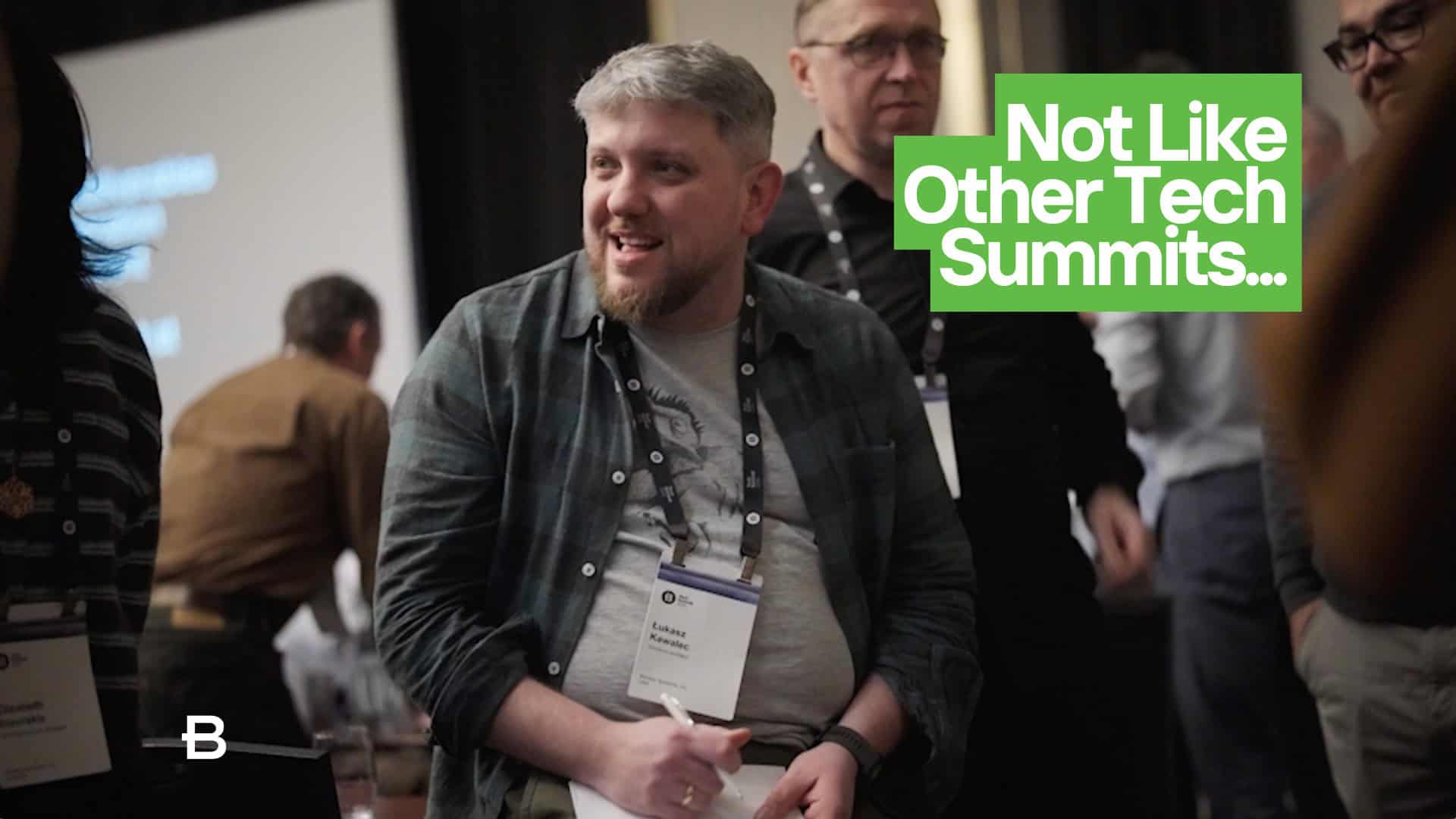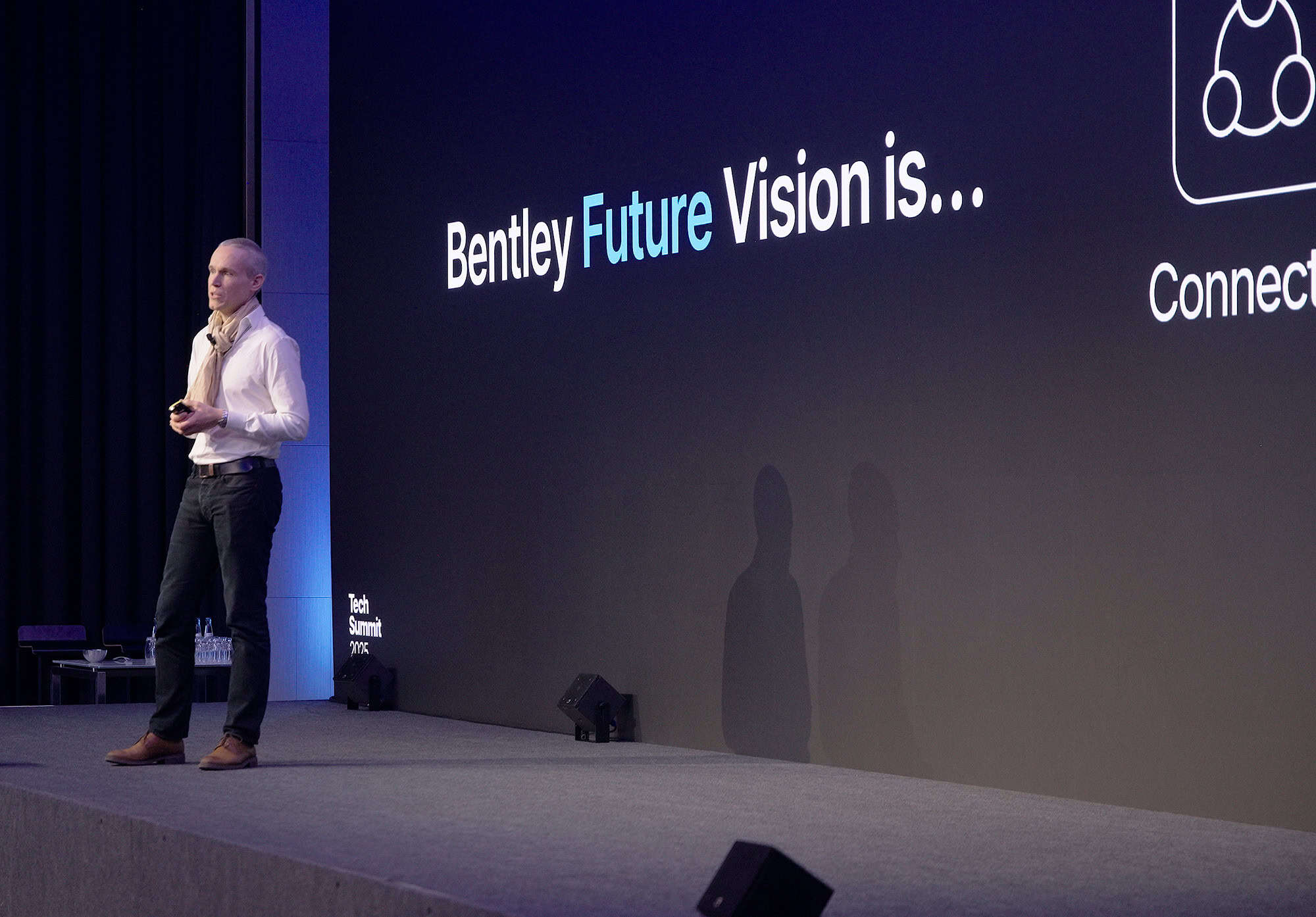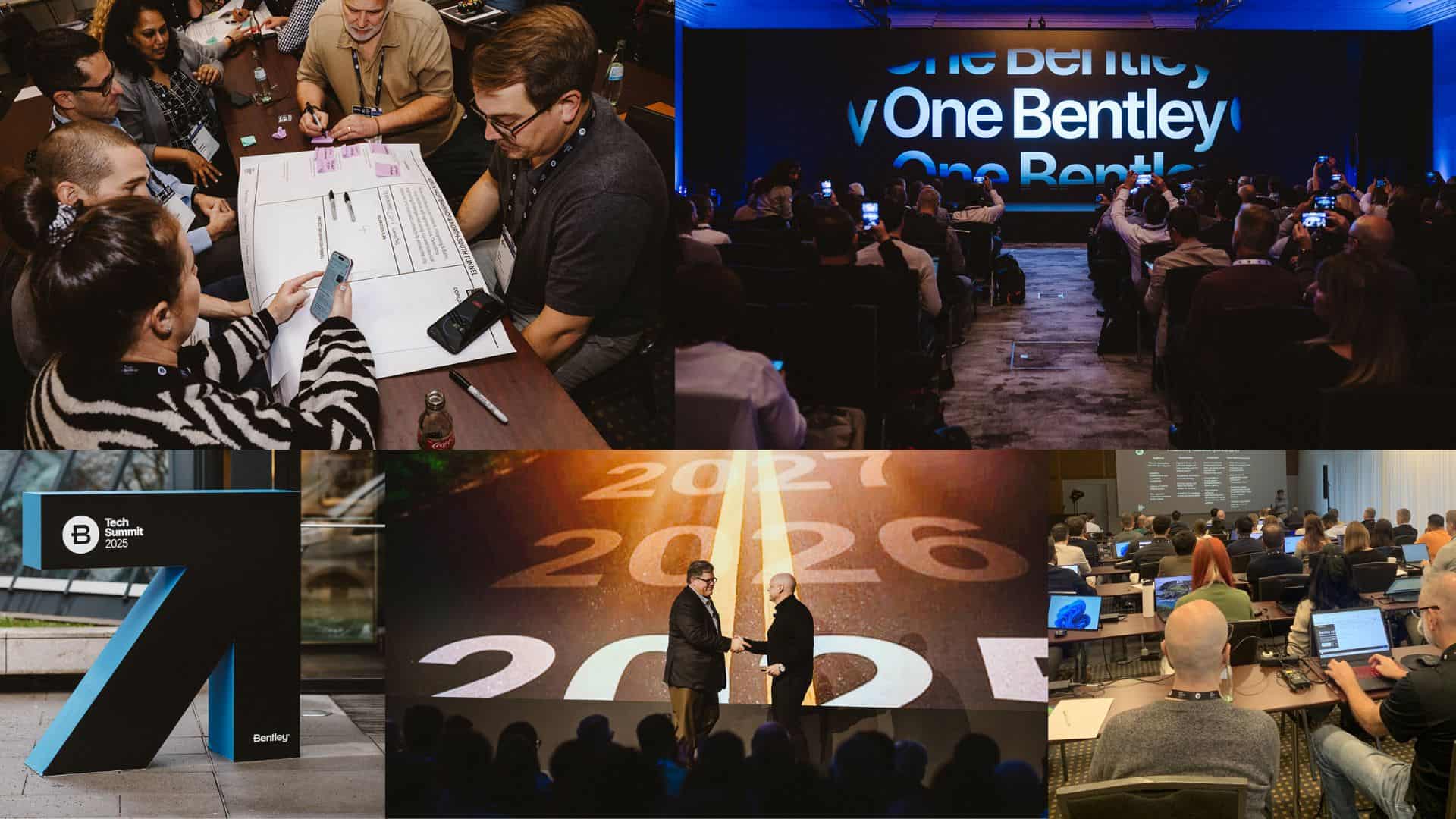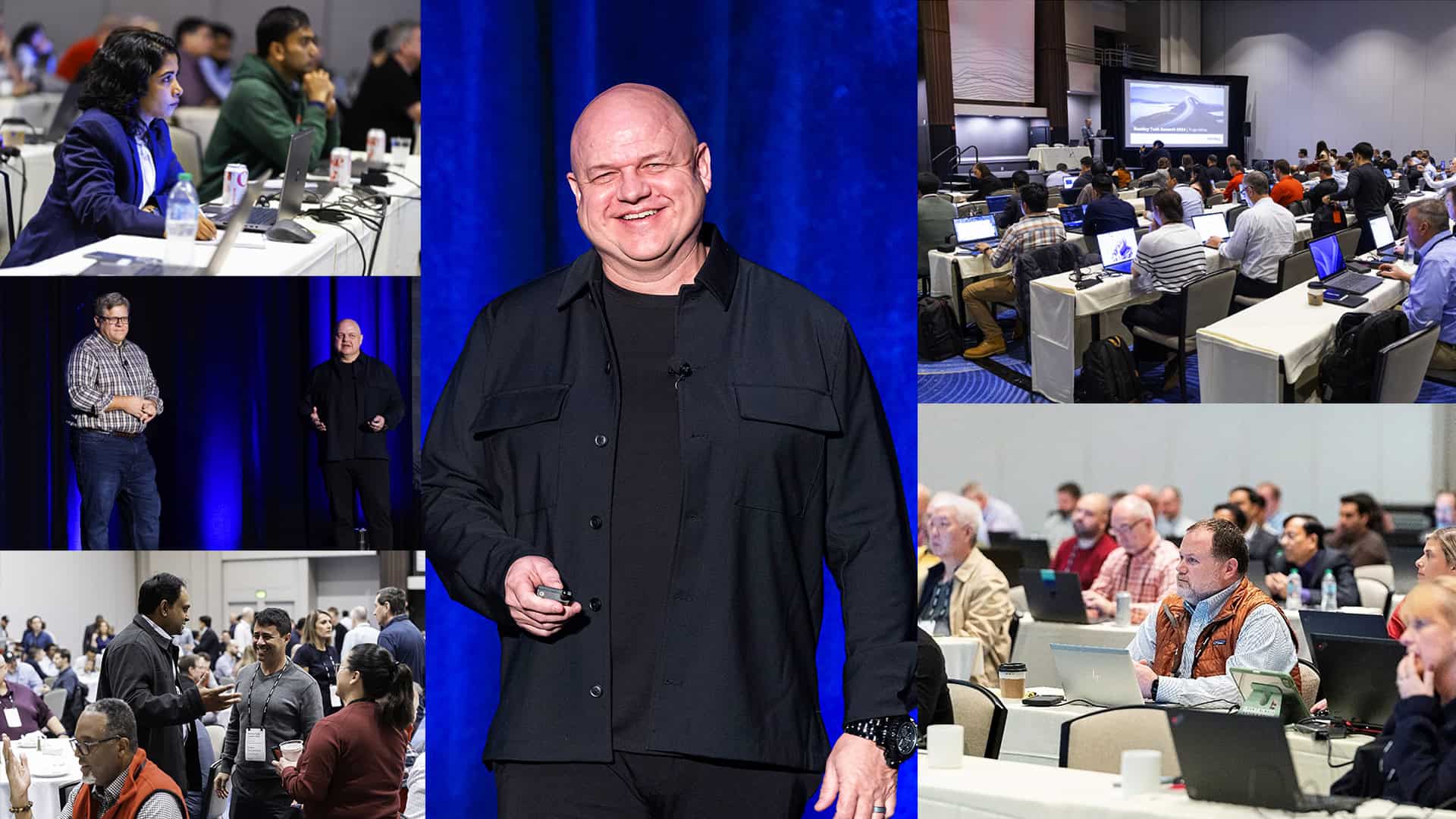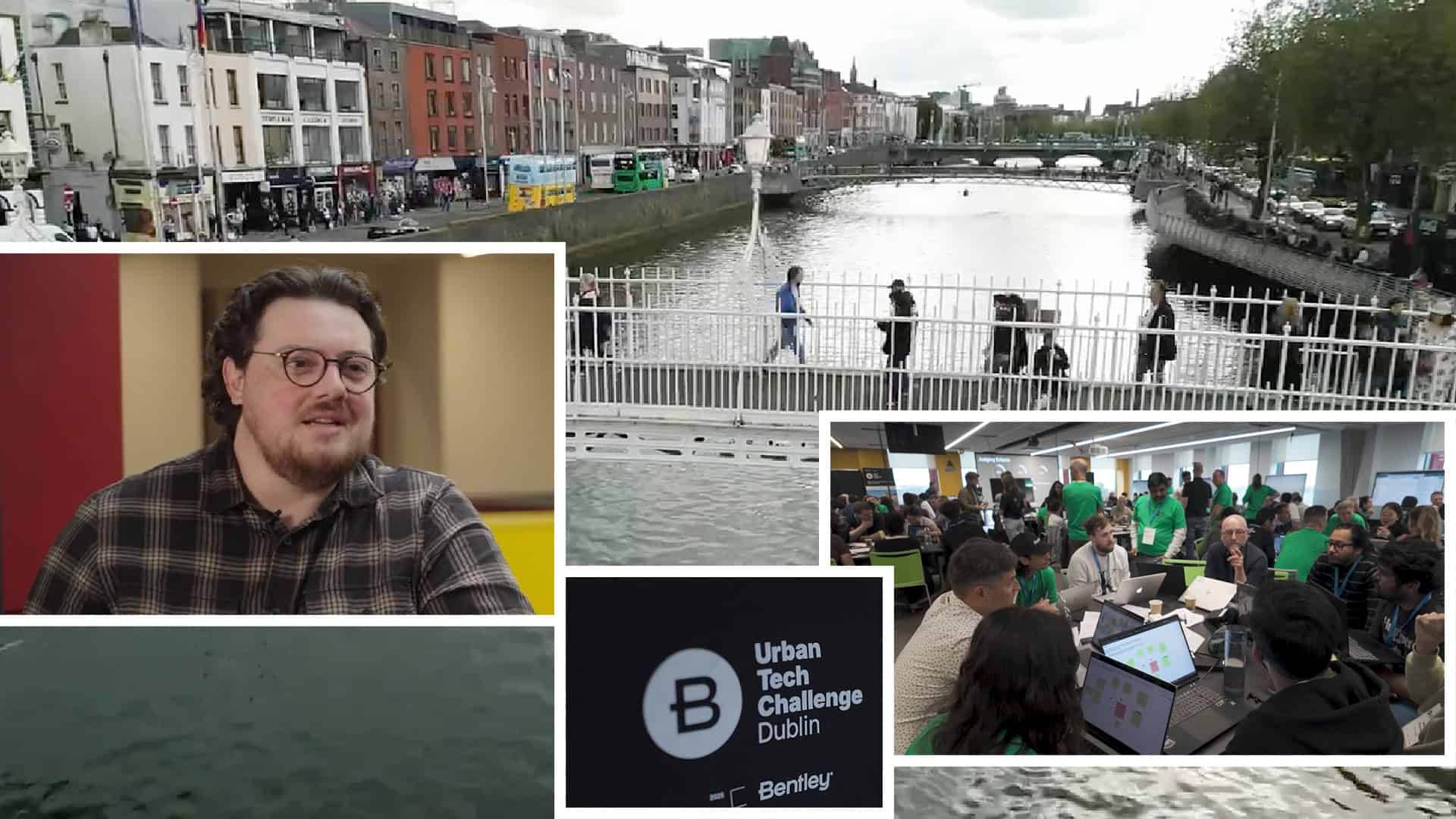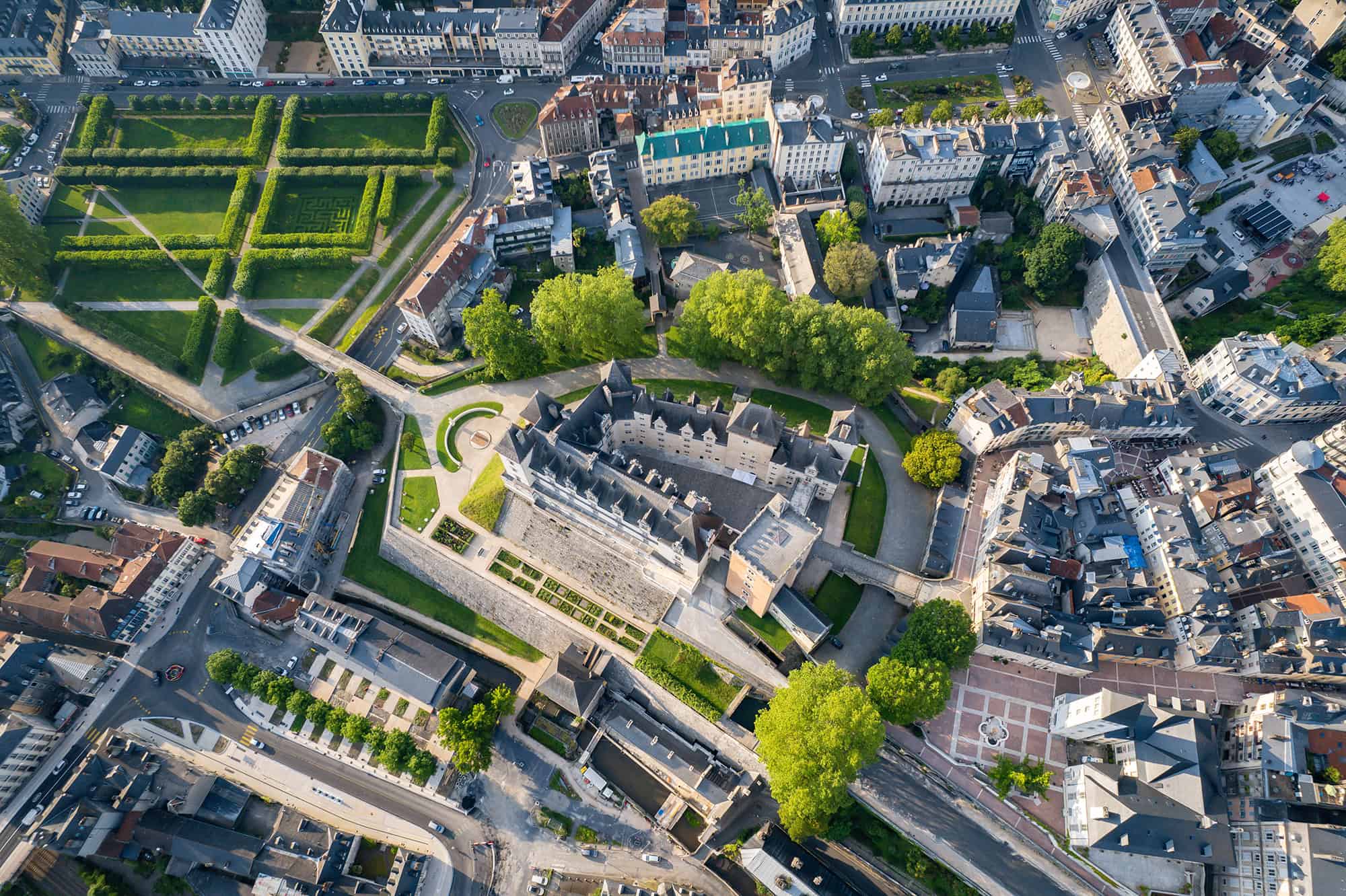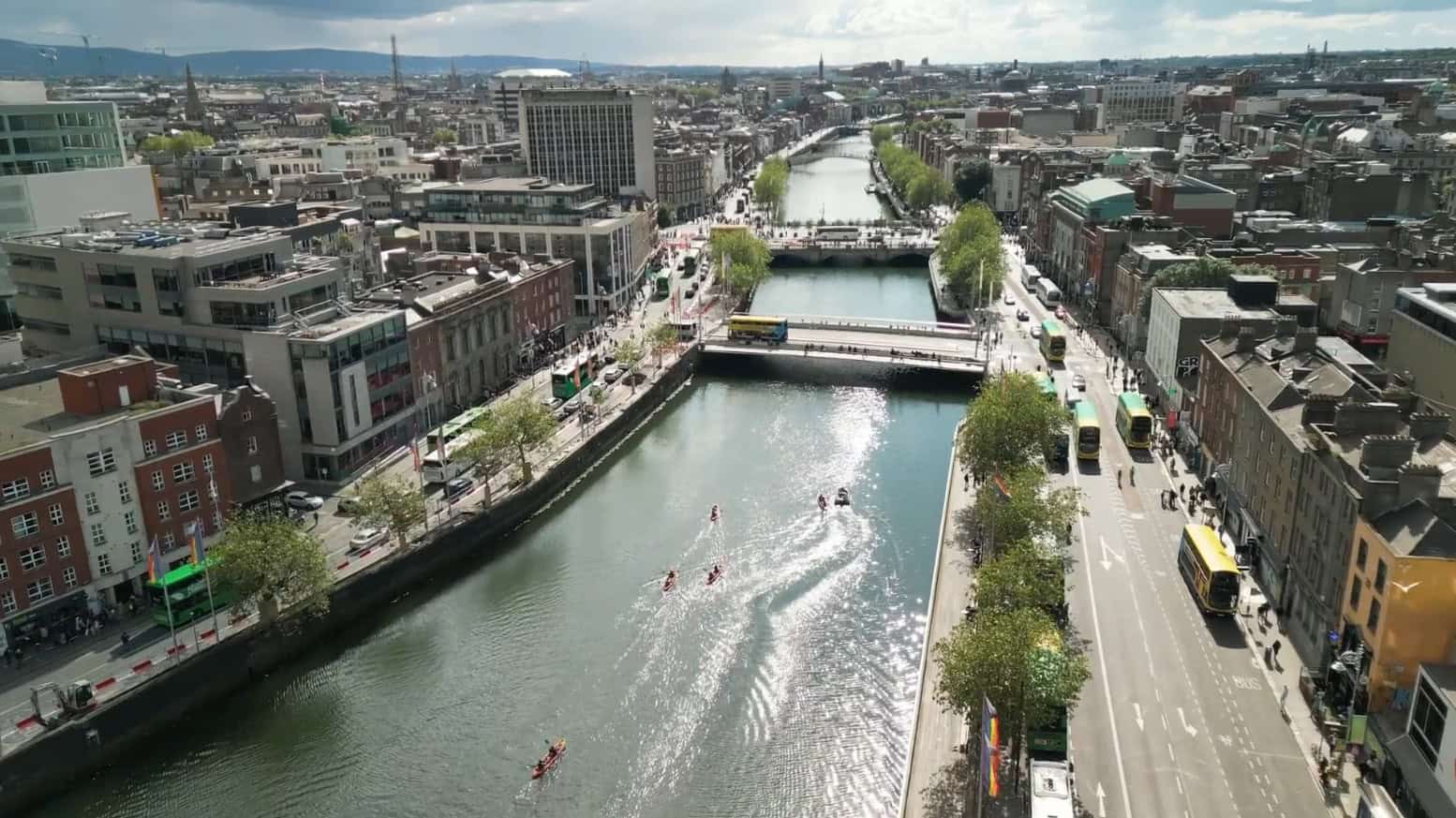Louisiana is no stranger to devastating storms and floods, but you’d never know it every February when New Orleans erupts in Mardi Gras, a festival of sound and color flavored with boisterous parades, jazz, and spicy crawfish boils. Locals know that beyond the beads and feathers and brass band music sits some of the most complex infrastructure on the planet, from levees and seawalls to canals and spillways, all built to protect the city surrounded by water from flooding.
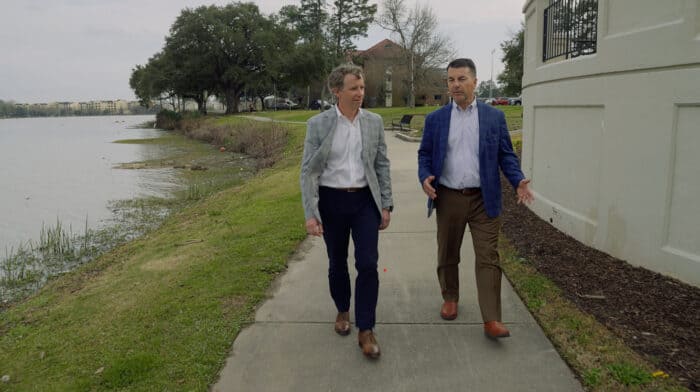 Joey Coco (left) and Scott Fargason are leading a revolution to digitize all infrastructure.
Joey Coco (left) and Scott Fargason are leading a revolution to digitize all infrastructure.Keeping the system up to date is an urgent task. The latest initiative to do so is the brainchild of James Scott Fargason, a business professor at Louisiana State University, and his former student, Russell J. “Joey” Coco Jr., now an acclaimed infrastructure engineer and executive. The duo is leading a revolution to digitize all infrastructure, from single bridges to entire cities, with an eye toward making it “smarter” and more resilient. Their vehicle is Digi-Twin Global, a company they started in Baton Rouge, home to LSU, to advance digital twin technology for infrastructure owners, managers, and operators.
“The future of digital twins is going to be what you can do with the huge amount of data that’s out there,” says Coco, president and CEO of the engineering firm Forte & Tablada and co-founder of Digi-Twin Global. “From machine learning to AI, all the potential that’s going to come out of that—once you have all the data compiled into one space—is just going to be unbelievable. It’s going to make infrastructure intelligent.”
A digital twin uses engineering, geospatial data, performance metrics, physics, and other information to build a virtual model of a real thing. The technology took center stage in late February, a week before Mardi Gras culminated in Fat Tuesday, when Digi-Twin held its first digital twin symposium at LSU. The event drew an A-list crowd of guests and presenters to the Baton Rouge campus, including NASA’s principal technologist John Vickers, who helped coin the phrase “digital twin.”
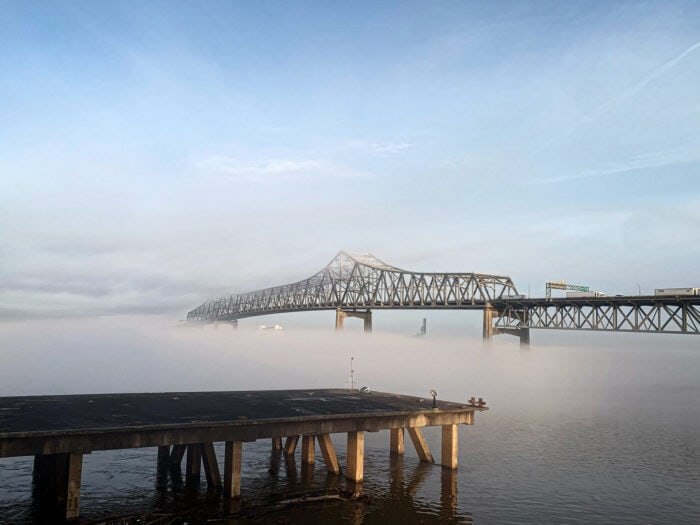 Baton Rouge is home to breathtaking infrastructure like the Horace Wilkinson Bridge, which carries the I-10 over the Mississippi.
Baton Rouge is home to breathtaking infrastructure like the Horace Wilkinson Bridge, which carries the I-10 over the Mississippi.Other guests included Malay Ghose Hajra, chief engineer at Southeast Louisiana Flood Protection Authority–East; Andy Kaiyala, who leads Digital Construction Management services at the global infrastructure engineering giant WSB; and Dustin Parkman, a Louisiana native and senior executive at Bentley Systems, the infrastructure engineering software company and a leader in digital twins. Bentley also sponsored the event.
Coco says Digi-Twin, which also provides consulting services, training, and certifications, hosts thought-leadership symposiums to help unify and accelerate the digital twin industry. “We started Digi-Twin to help propel the industry forward,” Coco says. “Digi-Twin’s mission is to empower stakeholders by integrating innovative solutions, enabling them to navigate, monitor, and optimize infrastructure like never before. We’re going to focus on bringing private capital to the market to help fund digital twins. We’re going to bring together people through symposiums and events, just like what’s happening here on LSU’s campus.”
A fortuitous lunch
Digi-Twin held its inaugural symposium at LSU, Coco’s alma mater. The university is also where he met Fargason, his Digi-Twin co-founder and his business professor during his MBA studies two decades ago. Fargason and Coco stayed in touch, and the professor watched his former student rise through the ranks at Forte & Tablada, a storied Louisiana civil engineering firm.
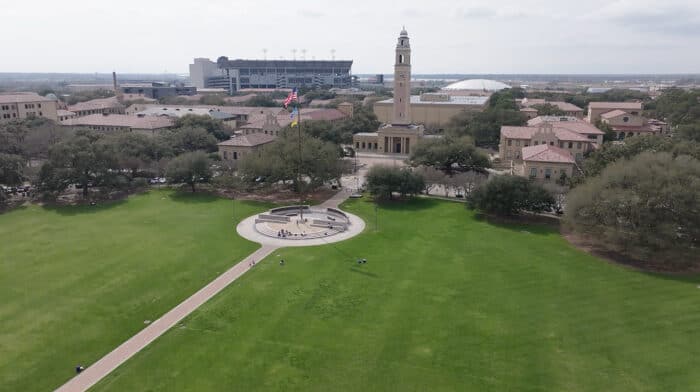 Louisiana State University in Baton Rouge hosted the first Digi-Twin Symposium..
Louisiana State University in Baton Rouge hosted the first Digi-Twin Symposium..Then one day, “over a conversation at lunch,” Coco recalls, “I told him what I thought the future was. Ever since then, we’ve been glued at the hip.” Last year, the two partnered to launch Digi-Twin. “From the beginning it was very clear that Joey was extremely advanced in the application of digital technology,” Fargason says. “To me, this ‘lighting in a bottle’ had to be quickly and globally scaled. We knew we had to make a statement, and the symposium was born.”
How cool is this!
The friends also had a non-business purpose in mind for the conference: to spur more interest in engineering, especially in digital twins. “We need to train engineers to be thinking about not just doing design projects, but also about preserving the existing systems that we’ve already built,” Coco says. “A key part of what we’re trying to do with the symposium is educate students, inform them about the opportunities with digital twins, but also propel the industry forward.”
They picked the right place. LSU is already home to a one-of-a-kind master’s degree program that focuses on digital twins, combining engineering, computer science, arts, and other disciplines. Students participating in the program presented their digital twin projects on the sidelines of the recent symposium. “The kids, they are the future of this, right?” says Parkman, the senior Bentley Systems executive at the symposium. “They are the ones that are going to be the next leaders of our industry. And because they’re digital natives, many of these tools and technologies are going to be in their DNA. When they come out into the market, it’s going to be ready for them.”
Or as Coco puts it: “I hope that students will be able to see just how cool this is.”
From Video Games To Digital Twins
LSU students are keen to start telling these stories. They are making a digital twin of the engineering school, and they recently built a digital twin of NASA’s enormous rocket factory in Michoud, in eastern New Orleans. The U.S. space agency is using the 2-million-square-foot facility to build the Artemis rocket and the Orion capsule for the next manned spaceflight to Mars. The LSU digital twin examined ways to improve manufacturing and other processes.
“We’re honoring the legacy of what we did in the past but trying to help [NASA] evolve into what it will become in the future, and in the process, developing what we ultimately produce, which is talent,” says Greg Trahan, LSU’s economic director.
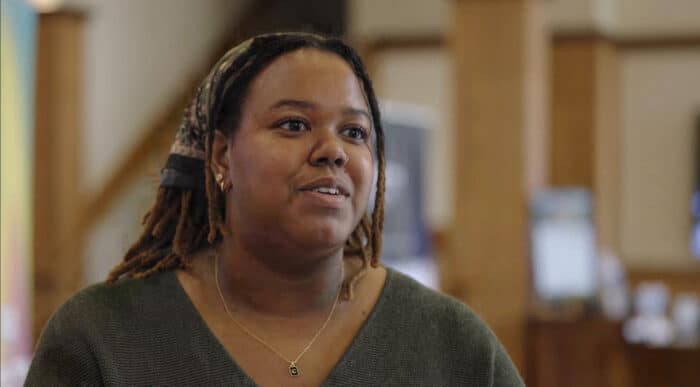 A combination of her love of video games and real-life problem-solving got LSU graduate student Ashley Elliot interested in digital twins.
A combination of her love of video games and real-life problem-solving got LSU graduate student Ashley Elliot interested in digital twins.This talent includes students like Ashley Elliott, who is enrolled in LSU’s digital twin program and is getting her master’s degree in digital media arts and engineering, with a focus on digital twins and 3D digital modeling. She says a combination of her love of video games and real-life problem-solving got her interested in digital twins. She jumped at the chance to join the NASA digital twin project. “I think the practical use is what really drew me in because I know that games can only be so much fun,” she says.
Her student team included future engineers, programmers, and video game developers who integrated data and concepts into a video game platform. They also tapped user interface and user experience designers to come up with a web interface.
Elliott wants to pursue a career in digital twins after she graduates later this year. “I’ve definitely pivoted in that direction,” she says. “I found that the data is what’s really important to me and knowing how we can improve situations using digital twins. So that is a goal—pursuing a job in this field.”
Digital Twins: The Engineer’s Answer To Having Too Much Data
To that end, the symposium also hosted Vicki Colvin, dean of the LSU School of Engineering, and Jared J. Llorens, dean of LSU’s E.J. Ourso College of Business. They addressed real projects and challenges—like using digital twins to protect New Orleans from flooding.
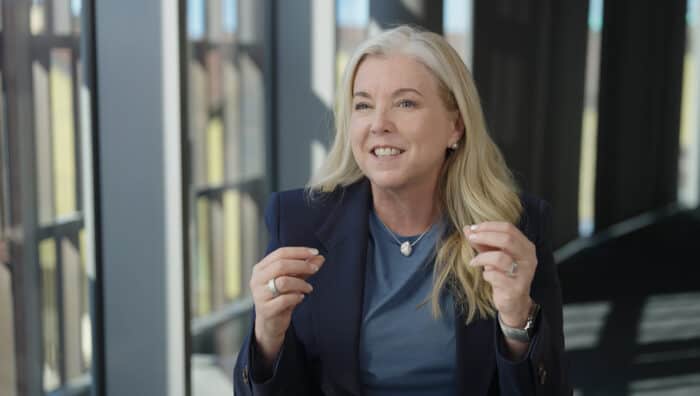 “I think that integrating AI tools is going to really take digital twins to a whole other level,” says Vicki Colvin, dean of the LSU School of Engineering
“I think that integrating AI tools is going to really take digital twins to a whole other level,” says Vicki Colvin, dean of the LSU School of EngineeringDigital twins as “the engineer’s answer to having too much data,” Colvin says, because the models can intake all that data and make it usable to people. “It is like the perfect marriage of the hardware side of engineering and the software side of engineering, really fused together so the human brain can interact with it very efficiently,” she says. The next step is artificial intelligence (AI), which will enable digital twins to provide suggestions and predictions, Colvin says. “I think that integrating AI tools is going to really take digital twins to a whole other level.”
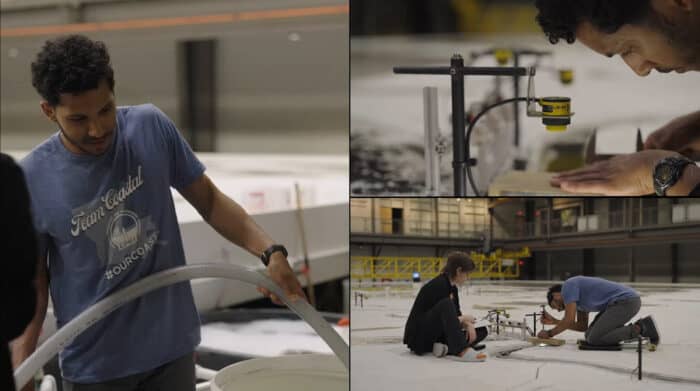 LSU students gathering sensor data from a model of the Mississippi at the Center for River Studies.
LSU students gathering sensor data from a model of the Mississippi at the Center for River Studies.Llorens is also enthusiastic about digital twins, saying the technology allows students “to tell a much more robust and clearer story” of what they’re trying to accomplish. Digital twins can help students evaluate large infrastructure projects, assess investments, develop new strategies, and communicate with community leaders, industry, and other stakeholders. “We’re swamped with data,” he says. “I really think it’s imperative to explore new opportunities to make sense of the data and to do so in more refined ways so we can tell the story of what we’re trying to do.”
Llorens says that’s why LSU encourages students to “be the best sponge you possibly can be and learn about areas outside your expertise.”
Digital twins serve as the perfect canvas for painting the big picture that anyone can grasp.

